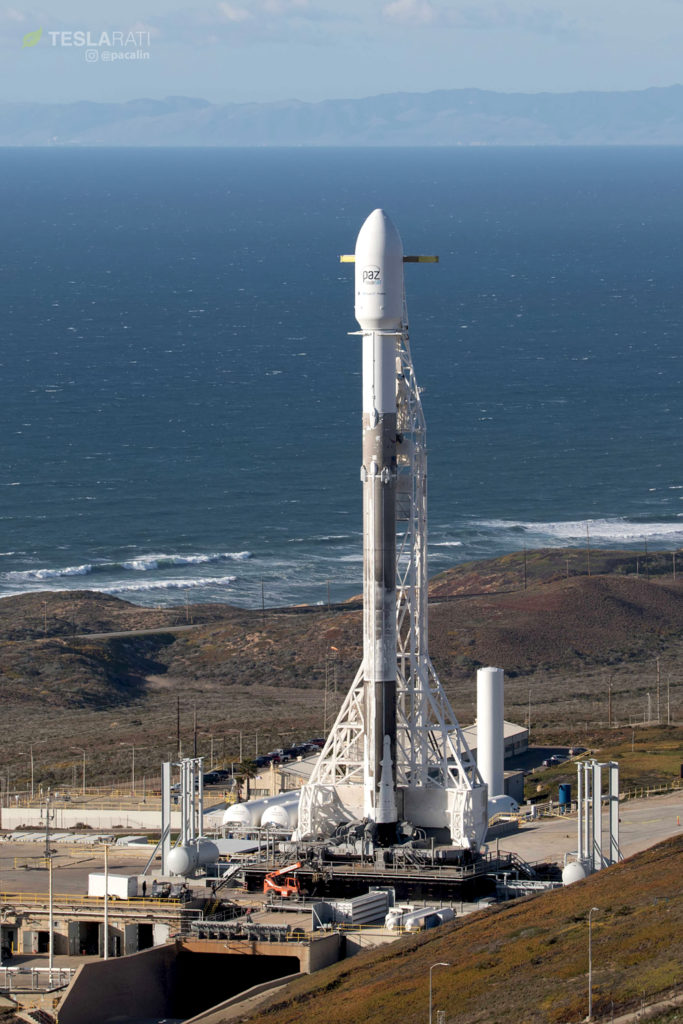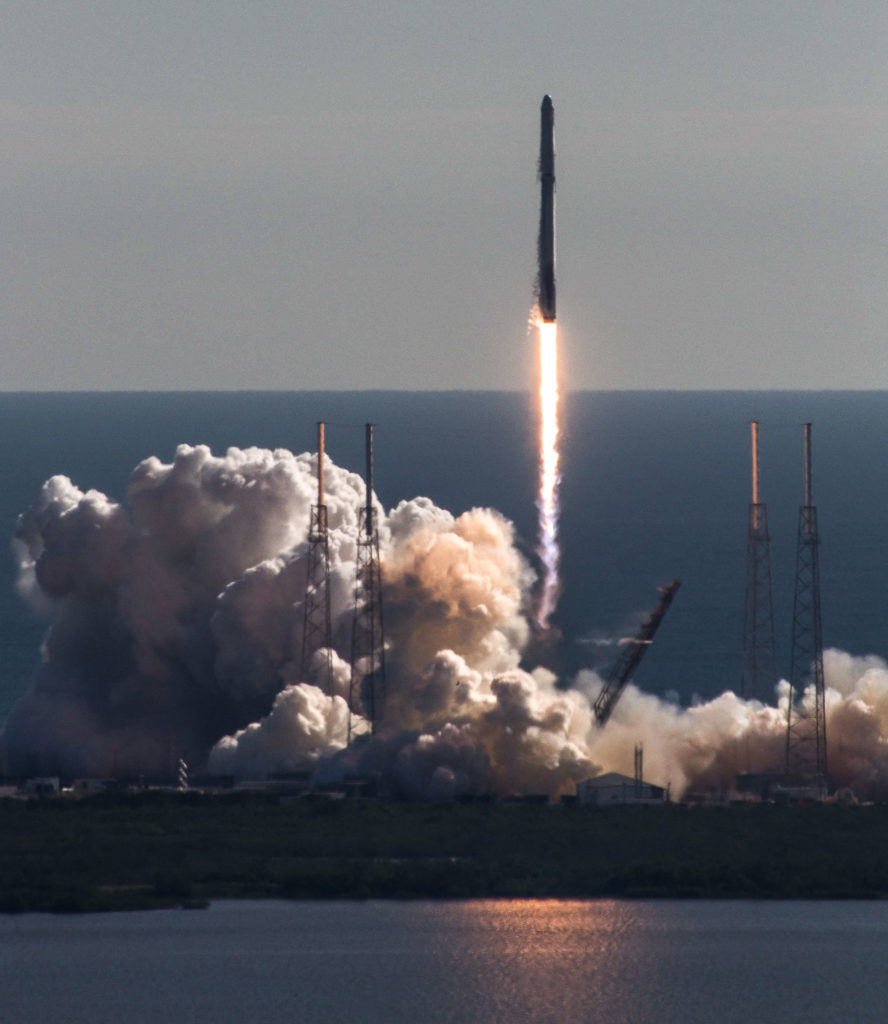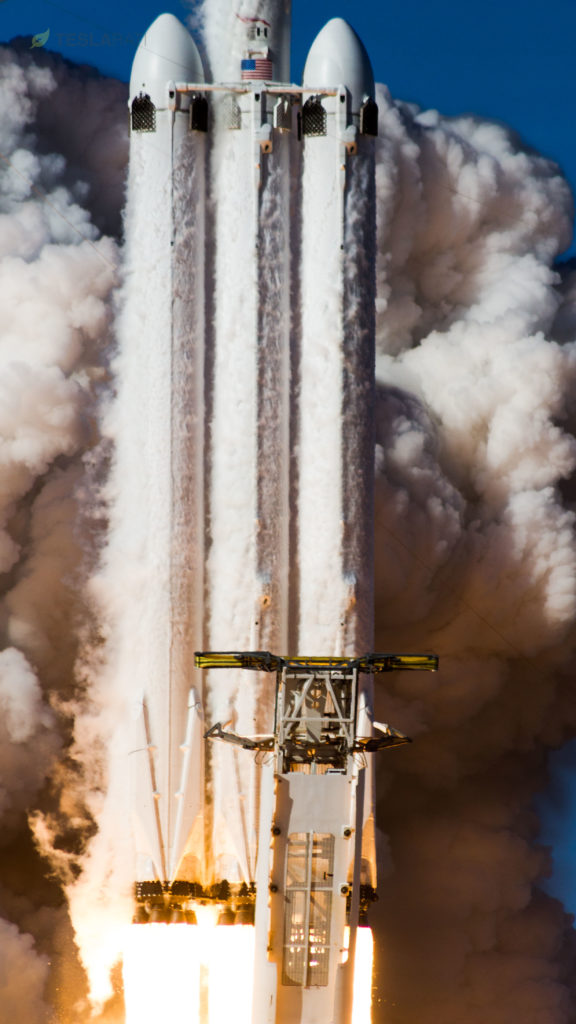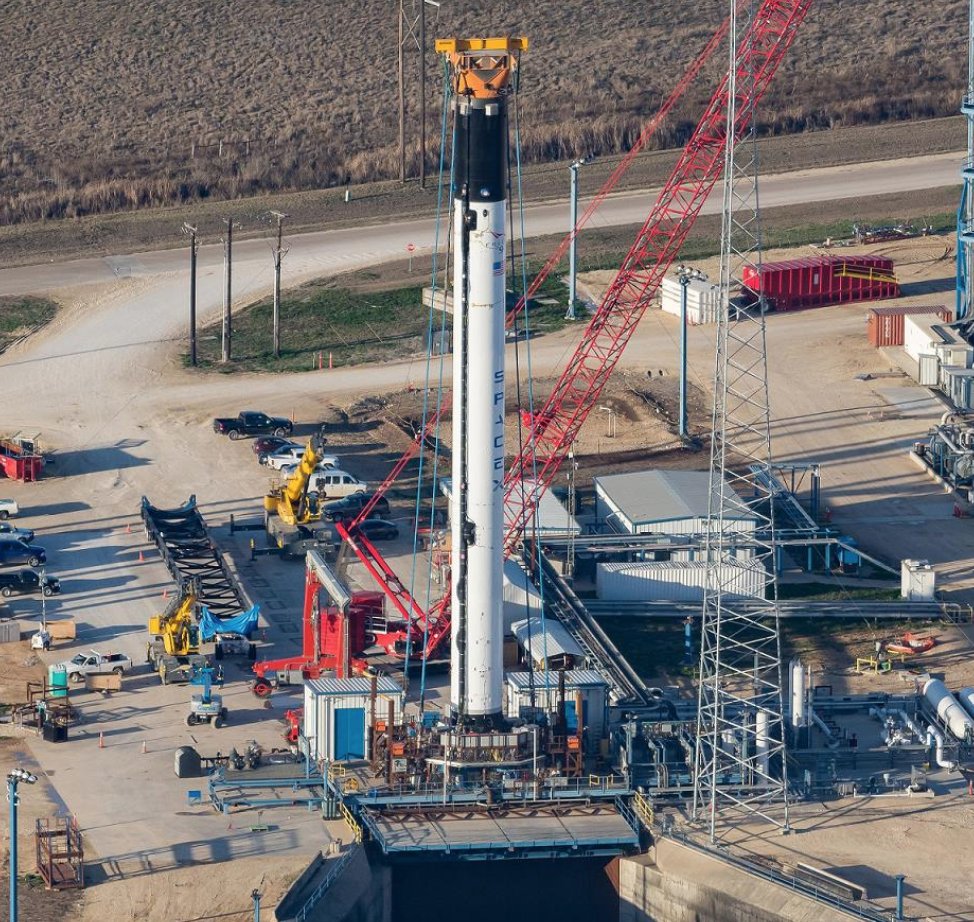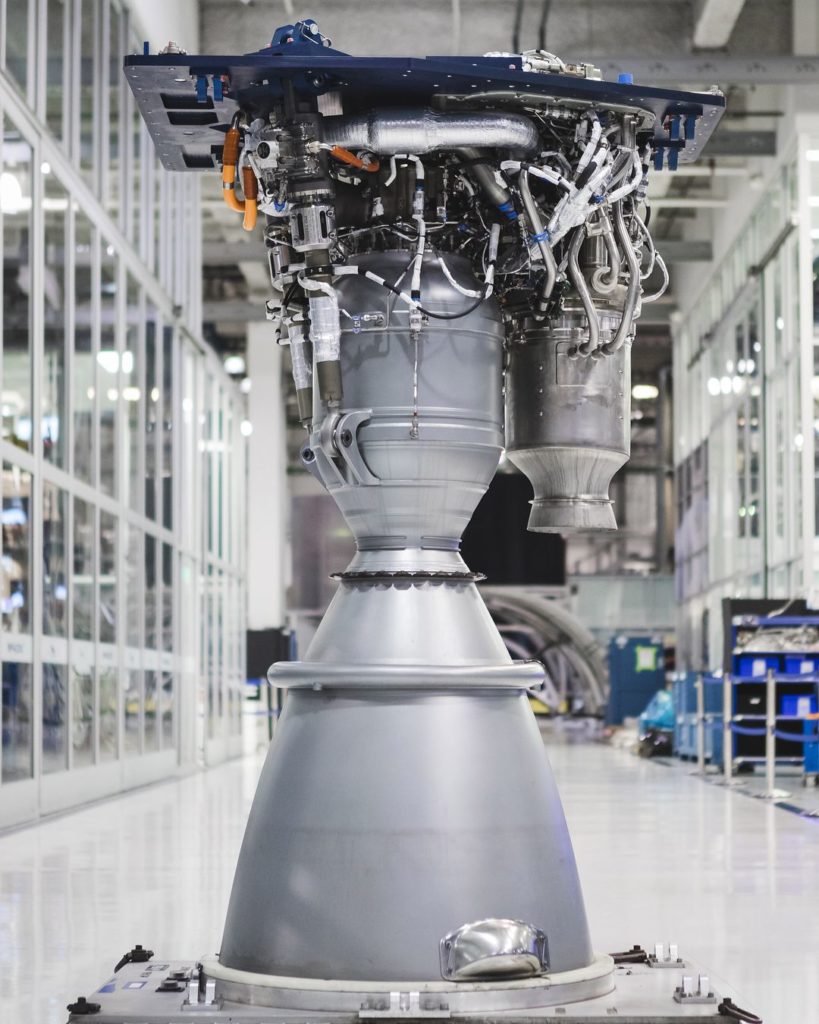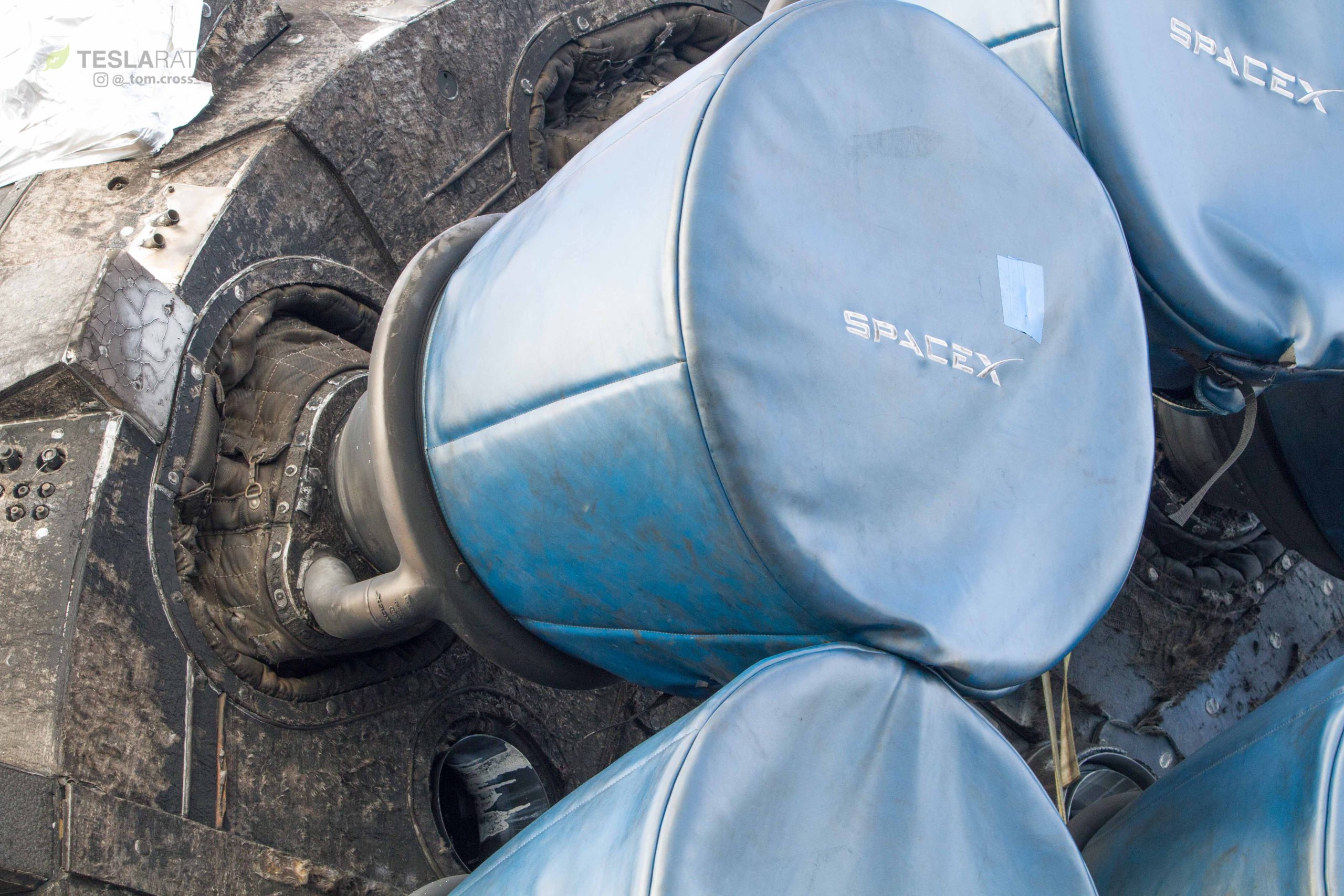
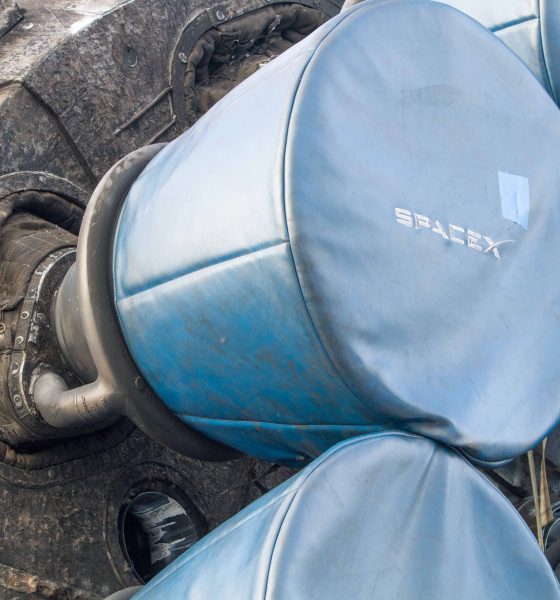
News
SpaceX aims for 3 rocket launches in a single week, 6 launches in 1 month
Tailing an intense February that saw SpaceX successfully complete inaugural launches of both Falcon Heavy and two Starlink prototype satellites, the next three weeks of March are likely to be relatively quiet. However, by all appearances, SpaceX is preparing for a frenetic end-of-month that could include three Falcon 9 launches from three separate SpaceX launch pads, all in a single week, and as many as six launches total between March 29 and April 30.
If successful, this series of missions would smash all of SpaceX’s past launch cadence records – six launches in little more than a single month, two reused flights in four days, three launches in one week, and two East coast launches in three days, not to mention the debut of Falcon 9 Block 5. To put this level of activity in perspective, SpaceX could complete the equivalent of four months or 33% of all of their 2017 launches in a single month. SpaceX’s aggressive goal of 30 launches in 2018 still means that the company could complete a full 1/5th of their scheduled manifest in less than five weeks, a cadence that – if maintained for a full year – would equate to 60-70 launches in 12 months.

50 launches of Falcon 9 in seven and a half years. Graphic produced by Reddit user ethan829. (Reddit /u/ethan829)
Three launches, three pads, seven days
Beginning on March 29, SpaceX’s next series of launches will kick off with the flight-proven Iridium-5 mission tasked with placing 10 Iridium NEXT communications satellites into LEO from Vandenberg Air Force Base. Three days later (April 2), a flight-proven Cargo Dragon and Falcon 9 booster are scheduled to lift off from LC-40 on the East coast, likely followed by the first stage’s second landing at LZ-1. Finally, SpaceX will return Pad 39A to its first single-stick Falcon 9 launches since February’s inaugural Falcon Heavy flight with Bangabandhu-1, the Bangladesh government’s first-ever geostationary satellite. Bangabandhu-1 will also mark the inaugural launch of SpaceX’ potentially game-changing Falcon 9 upgrade, and that invaluable pathfinder booster will almost certainly find its way to a soft landing aboard the Atlantic drone ship Of Course I Still Love You (OCISLY).
Following those three launches and around ten days of quiet, SpaceX will launch NASA’s TESS, a scientific probe tasked with searching for planets beyond our solar system, from Florida’s LC-40, April 16. After another ten-day “break,” the company will jump back to the West coast to place another five Iridium NEXT satellites (and two NASA science payloads) into orbit on April 28. On April 30, just two days later, SES-12 is scheduled for an East coast launch to geostationary transfer orbit aboard a reused Falcon 9.
- SpaceX intends to launch three Falcon 9s from all three of its pads in just seven days. Pictured here their VAFB pad in California. (Pauline Acalin)
- A reused Falcon 9 clears the lightning towers of Florida’s Launch Complex-40 (LC-40). (Tom Cross)
- Falcon Heavy explodes off of Pad 39A in a spectacle of fire, Roadster in tow. (Tom Cross)
A new era of rapid reusability rears its head
Put simply, this is an extreme pace for orbital launches, and would be an absolutely staggering achievement for SpaceX even if Hispasat’s week-long delay extends that month-long period to six or so weeks for a half-dozen launches. While almost certainly a coincidence, this rapid succession of launches happens to coincide with the inaugural April 5th launch of SpaceX’s next-generation Falcon 9, an upgrade meant to enable cheap and rapid reuse of the rocket’s first stage. With Block 5, it is entirely conceivable that a Falcon 9 booster could land at LZ-1, be transported back to the launch pad after a brief once-over, and conduct another launch in a matter of days, at a meaningful cost of little more than the second stage and payload fairing (for the time being, at least). Of course, those minimal costs will at first help SpaceX recoup its considerable investments in reusability, but they can be expected to trickle down to the customer within a year or two (~30-60 launches) of Block 5’s introduction.
- SpaceX Block 5 Falcon9 at McGregor, Texas [Credit: Chris G – NSF via Twitter, Reprinted with permission from NASASpaceflight.com]
- A matte-silver Block 5 Merlin 1D rocket engine seen preparing to leave SpaceX’s Hawthorne factory for testing in Texas. (SpaceX)
Ultimately, Falcon 9 Block 5 will give SpaceX an unprecedented amount of capital flexibility. Once the upgrade has phased out older Falcons, the company will have a huge amount of freedom to constantly strike a balance between competitive pricing and profit margins. In other words, no launch provider on Earth will be able to lowball SpaceX on cost without SpaceX’s conscious acquiescence, and every single recoverable launch of a Block 5 will equate to profit margins previously inconceivable for the company. However, rather than lining the pockets of military-industrial complex profiteers, those profits will help SpaceX both pay off R&D debts and intensively invest in more thrilling hardware developments, including Crew Dragon, Starlink, Raptor, BFR/BFS, and beyond. SpaceX does not intend to become rich and lazy in their success — they mean to develop technology that will provide affordable internet on a global scale, return humanity to the moon, and one day establish a permanent and self-sustaining city on Mars.
Follow us for live updates, behind-the-scenes sneak peeks, and a sea of beautiful photos from both our East and West coast photographers.
Teslarati – Instagram – Twitter
Tom Cross – Twitter
Pauline Acalin – Twitter
Eric Ralph – Twitter

Cybertruck
Tesla updates Cybertruck owners about key Powershare feature

Tesla is updating Cybertruck owners on its timeline of a massive feature that has yet to ship: Powershare with Powerwall.
Powershare is a bidirectional charging feature exclusive to Cybertruck, which allows the vehicle’s battery to act as a portable power source for homes, appliances, tools, other EVs, and more. It was announced in late 2023 as part of Tesla’s push into vehicle-to-everything energy sharing, and acting as a giant portable charger is the main advantage, as it can provide backup power during outages.
Cybertruck’s Powershare system supports both vehicle-to-load (V2L) and vehicle-to-home (V2H), making it flexible and well-rounded for a variety of applications.
However, even though the feature was promised with Cybertruck, it has yet to be shipped to vehicles. Tesla communicated with owners through email recently regarding Powershare with Powerwall, which essentially has the pickup act as an extended battery.
Powerwall discharge would be prioritized before tapping into the truck’s larger pack.
However, Tesla is still working on getting the feature out to owners, an email said:
“We’re writing to let you know that the Powershare with Powerwall feature is still in development and is now scheduled for release in mid-2026.
This new release date gives us additional time to design and test this feature, ensuring its ability to communicate and optimize energy sharing between your vehicle and many configurations and generations of Powerwall. We are also using this time to develop additional Powershare features that will help us continue to accelerate the world’s transition to sustainable energy.”
Owners have expressed some real disappointment in Tesla’s continuous delays in releasing the feature, as it was expected to be released by late 2024, but now has been pushed back several times to mid-2026, according to the email.
Foundation Series Cybertruck buyers paid extra, expecting the feature to be rolled out with their vehicle upon pickup.
Cybertruck’s Lead Engineer, Wes Morrill, even commented on the holdup:
As a Cybertruck owner who also has Powerwall, I empathize with the disappointed comments.
To their credit, the team has delivered powershare functionality to Cybertruck customers who otherwise have no backup with development of the powershare gateway. As well as those with solar…
— Wes (@wmorrill3) December 12, 2025
He said that “it turned out to be much harder than anticipated to make powershare work seamlessly with existing Powerwalls through existing wall connectors. Two grid-forming devices need to negotiate who will form and who will follow, depending on the state of charge of each, and they need to do this without a network and through multiple generations of hardware, and test and validate this process through rigorous certifications to ensure grid safety.”
It’s nice to see the transparency, but it is justified for some Cybertruck owners to feel like they’ve been bait-and-switched.
News
Tesla’s northernmost Supercharger in North America opens

Tesla has opened its northernmost Supercharger in Fairbanks, Alaska, with eight V4 stalls located in one of the most frigid cities in the U.S.
Located just 196 miles from the Arctic Circle, Fairbanks’s average temperature for the week was around -12 degrees Fahrenheit. However, there are plenty of Tesla owners in Alaska who have been waiting for more charging options out in public.
There are only 36 total Supercharger stalls in Alaska, despite being the largest state in the U.S.
Eight Superchargers were added to Fairbanks, which will eventually be a 48-stall station. Tesla announced its activation today:
North America’s northernmost Supercharger Fairbanks, AK (8 stalls) opened to public. https://t.co/M4l04DZ6B5 pic.twitter.com/zyL6bDuA93
— Tesla Charging (@TeslaCharging) December 12, 2025
The base price per kWh is $0.43 at the Fairbanks Supercharger. Thanks to its V4 capabilities, it can charge at speeds up to 325 kW.
Despite being the northernmost Supercharger in North America, it is not even in the Top 5 northernmost Superchargers globally, because Alaska is south of Norway. The northernmost Supercharger is in Honningsvåg, Norway. All of the Top 5 are in the Scandanavian country.
Tesla’s Supercharger expansion in 2025 has been impressive, and although it experienced some early-quarter slowdowns due to V3-to-V4 hardware transitions, it has been the company’s strongest year for deployments.
🚨🚨 Tesla Supercharging had a HUGE year, and they deserve to be recognized.
🍔 Opened Tesla Diner, a drive-in movie theater with awesome, Chef-curated cuisine
🔌 Gave access to Superchargers to several EV makers, including Hyundai, Genesis, Mercedes-Benz, Kia, Lucid, Toyota,… pic.twitter.com/yYT2QEbqoW
— TESLARATI (@Teslarati) December 10, 2025
Through the three quarters of 2025, the company has added 7,753 stations and 73,817 stalls across the world, a 16 percent increase in stations and an 18 percent increase in stalls compared to last year.
Tesla is on track to add over 12,000 stalls for the full year, achieving an average of one new stall every hour, an impressive statistic.
Recently, the company wrapped up construction at its Supercharger Oasis in Lost Hills, California, a 168-stall Supercharger that Tesla Solar Panels completely power. It is the largest Supercharger in the world.
News
Tesla shocks with latest Robotaxi testing move
Why Tesla has chosen to use a couple of Model S units must have a reason; the company is calculated in its engineering and data collection efforts, so this is definitely more than “we just felt like giving our drivers a change of scenery.”

Tesla Model S vehicles were spotted performing validation testing with LiDAR rigs in California today, a pretty big switch-up compared to what we are used to seeing on the roads.
Tesla utilizes the Model Y crossover for its Robotaxi fleet. It is adequately sized, the most popular vehicle in its lineup, and is suitable for a wide variety of applications. It provides enough luxury for a single rider, but enough room for several passengers, if needed.
However, the testing has seemingly expanded to one of Tesla’s premium flagship offerings, as the Model S was spotted with the validation equipment that is seen entirely with Model Y vehicles. We have written several articles on Robotaxi testing mules being spotted across the United States, but this is a first:
🚨 Tesla is using Model S vehicles fitted with LiDAR rigs to validate FSD and Robotaxi, differing from the Model Ys that it uses typically
Those Model Y vehicles have been on the East Coast for some time. These Model S cars were spotted in California https://t.co/CN9Bw5Wma8 pic.twitter.com/UE55hx5mdd
— TESLARATI (@Teslarati) December 11, 2025
Why Tesla has chosen to use a couple of Model S units must have a reason; the company is calculated in its engineering and data collection efforts, so this is definitely more than “we just felt like giving our drivers a change of scenery.”
It seems to hint that Tesla could add a premium, more luxury offering to its Robotaxi platform eventually. Think about it: Uber has Uber Black, Lyft has Lyft Black. These vehicles and services are associated with a more premium cost as they combine luxury models with more catered transportation options.
Tesla could be testing the waters here, and it could be thinking of adding the Model S to its fleet of ride-hailing vehicles.
Reluctant to remove the Model S from its production plans completely despite its low volume contributions to the overall mission of transitioning the world to sustainable energy, the flagship sedan has always meant something. CEO Elon Musk referred to it, along with its sibling Model X, as continuing on production lines due to “sentimental reasons.”
However, its purpose might have been expanded to justify keeping it around, and why not? It is a cozy, premium offering, and it would be great for those who want a little more luxury and are willing to pay a few extra dollars.
Of course, none of this is even close to confirmed. However, it is reasonable to speculate that the Model S could be a potential addition to the Robotaxi fleet. It’s capable of all the same things the Model Y is, but with more luxuriousness, and it could be the perfect addition to the futuristic fleet.
